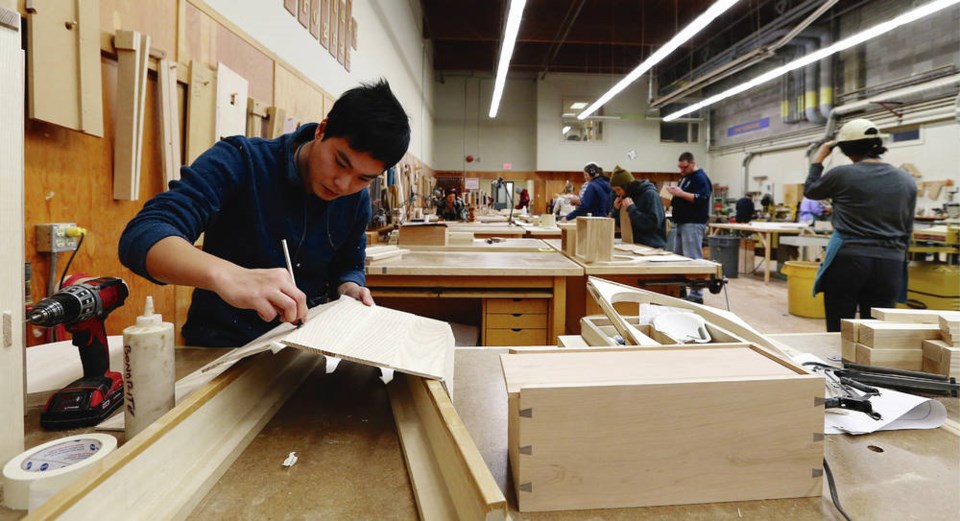For Grade 12 students approaching graduation, the big question is: “What happens next?”
In fact, asking that question in grades 10 and 11 and not waiting until Grade 12 serves students and their parents well as they make decisions about options and prerequisites for their final year in high school
The transition from high school to college is a big step, fraught with uncertainty, and that’s why Camosun College’s Dual Credit South Island Partnership is exactly the right program at the right time.
Dual-credit courses and programs enable students to receive credit for post-secondary courses, while simultaneously receiving high-school credit toward graduation.
Acquiring some post-secondary training and college credit before graduation also avoids the five-course “crunch” that sometimes defeats post-secondary students in their first year.
Dual-credit classes involve high school teachers team-teaching with Camosun instructors inside and/or outside the regular secondary timetable. Students get credit for a high-school and a Camosun course simultaneously.
The South Island Partnership, which enrols an equal number of male and female students, is a collaboration between Camosun College, the Construction Foundation of B.C. and five school districts. The partnership is currently serving 800 to 1000 students in a variety of dual-credit opportunities, according to SIP’s program co-ordinator, Nicola Priestly.
Initially, the program focused on trades pathways, but it has since branched out to provide dual-credit pathways in health and human services, technology, business and communications, as well as other post-secondary options over time.
Students can participate in dual-credit programming in a variety of ways.
Some options are full-time programs, like the trades pathway, while others are standalone courses taught on-campus, online or in secondary schools as collaborations between secondary teachers and college instructors.
For students who are are attracted to the trades program but not certain what exactly they want to do, there is the TASK (Trades Awareness, Skills and Knowledge) program for grades 10 to 12, which allows them to explore four trade areas: carpentry, electrical, metal trades and plumbing. The full-time five-month program allows students to earn high school and college credit at the same time, with tuition fees covered by the participating school district.
Normally, the TASK program is offered in five locations simultaneously, from February to June, and students can attend at any one of the locations, provided there is space available.
Right now, the participating schools are Lambrick Park Secondary (Greater Victoria School District), Royal Bay Secondary and Edward Milne Community School (Sooke School District), Claremont Secondary (Saanich School District) and Frances Kelsey Secondary (Cowichan Valley School District).
One of SIP’s industry partners is the Construction Foundation of B.C., a non-profit that provides “Skills Ready,” a trade sampler program that enables young folks to build a real-world understanding of the advantages of starting out in skilled trades and technologies.
According to the foundation’s website, more than 5,200 young people, including 1,600 Indigenous youth, have participated in Skills Ready Showcase events.
A Skills Ready Showcase event enables trades and technology students to showcase their projects to industry reps, and hopefully develop meaningful connections between employers and their future employees.
In addition, more than 200 secondary school educators have invited Construction Foundation of B.C. career counsellors into their classrooms.
The result is that students have meaningful support as they transition from secondary to post-secondary. This support includes information and access to educational and employment options and possibilities that vary depending on the discipline chosen.
Thanks to Camosun College, the Construction Foundation of B.C. and the five participating school districts, the once confusing road to post-secondary options now has a map for south Vancouver Island students in grades 11 or 12.
Students interested in the dual-credit program should contact the school career co-ordinator at the location they prefer to attend.
After submitting an application, students will be invited to an interview to ensure that the program is a good fit.
Geoff Johnson is a former Superintendent of Schools. [email protected]



